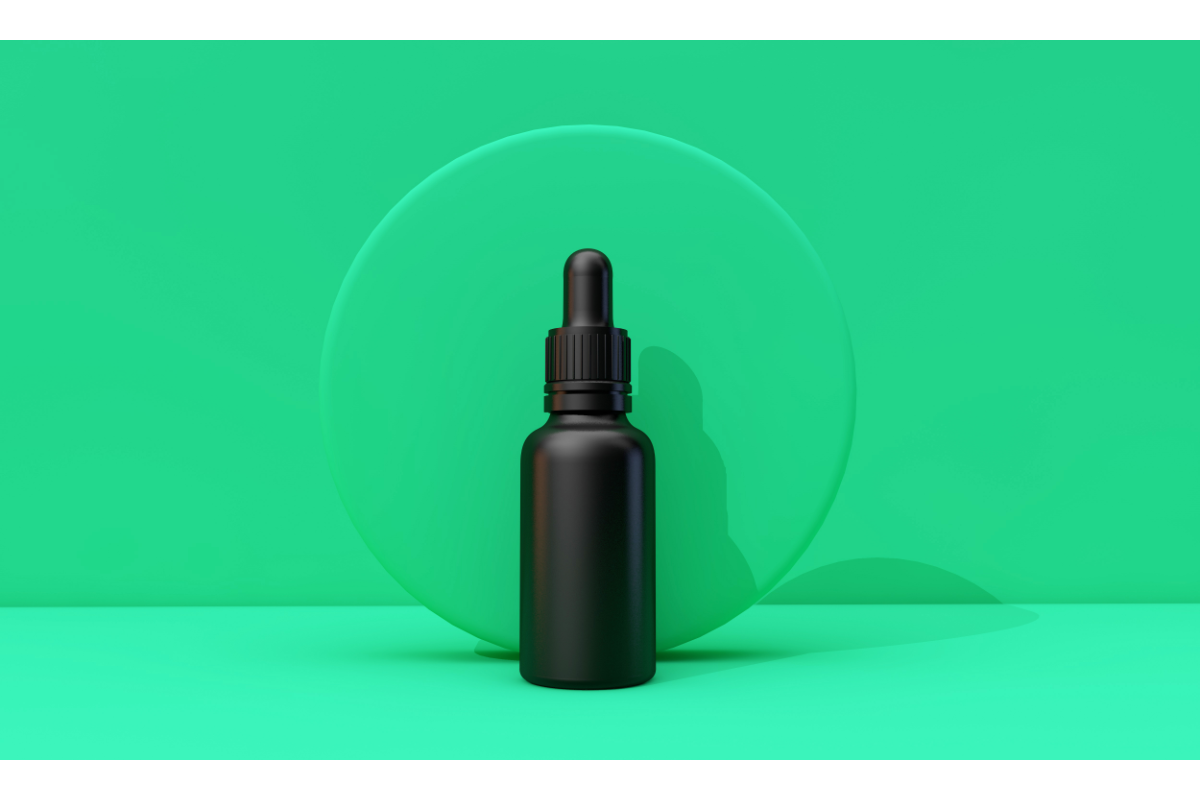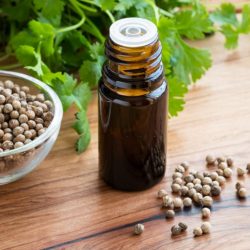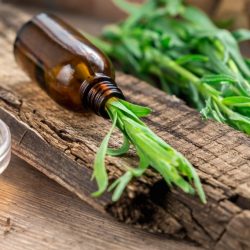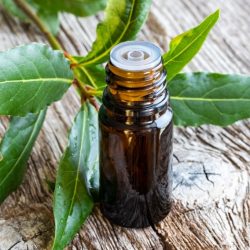Dive into the fascinating world of chemotyped essential oils and discover how HECT aromatherapy is revolutionising natural skincare. In this article, we explore the concept of chemotype, a key criterion for choosing quality essential oils, guaranteeing their efficacy and safety. Learn to differentiate between the various biochemical compounds, such as monoterpenols and sesquiterpenols, and understand their impact on health. Whether you’re an aromatherapy enthusiast or a curious novice, this in-depth guide offers a clear and scientific understanding of how chemotyped essential oils can be used for optimal well-being. Join us in this aromatic exploration and enrich your knowledge of nature’s powerful virtues.
What is a chemotyped essential oil or CTEO in aromatherapy?
After a gradual evolution in research,modern aromatherapy reached maturity in 1980, the time when biochemists isolated the active ingredients from molecules. Dr Pierre Franchomme, with his concept of the chemotype, helped to improve the identification of the active ingredients in the extracts used. From then on, science redoubled its investigations into phytology.
What is a chemotype?
The chemotype of an essential oil (E.O.) is defined by the level of the molecule most present in an essential oil. It is essential to be familiar with the concept of “chemotype“, also known as chemotype. A defined biochemical race, as soon as you start talking about aromatherapy. This clarification of the essential oil ultimately makes it possible to define the biochemically active molecule(s) in a number of clinically studied pathologies.
One example among many will help illustrate this fundamental concept introduced by Pierre Franchomme:
THYME is a plant widely used for the therapeutic properties of its essential oil. Of course, there are many biotopes where this plant species thrives.
- 1st chemotype: Thyme with thymol: Thymus vulgaris CT thymol (this E.O. contains around 40% thymol, which defines its chemotype)
- 2nd chemotype: Thujanol thyme: Thymus vulgaris CT thujanol (it contains approximately 50% thujanol, which defines its chemotype)
- 3rd chemotype: Thyme linalool: Thymus vulgaris CT linalol (it contains around 60% linalool, which defines its chemotype)
A molecule is generally only included in an E.H. if it exceeds 10%.
The precision of the chemotype and the Latin scientific name are widely used in scientific and academic publications. They help us to understand how essential oils work, thereby promoting the use of aromatherapy, a natural, powerful and effective form of therapy. This identification also reveals the quality of the essential oil. Without this information on the packaging, the quality of the essential oil is probably poor.
Identifying the chemotype :
In aromatherapy, the chemotype identifies the chemical variations in secondary metabolites within the same species. These variations are influenced by environmental factors such as altitude, sunshine, temperature and humidity. As a result, two plants of the same species, despite having similar genotypes and morphologies, can have significantly different chemical compositions. This is a very important concept in aromatherapy.
An aromatic plant will produce totally different essential oils depending on where it is harvested or where it comes from. Biochemically different chemotypes will not only have different therapeutic activities, but also very different toxicities.
An essence can be extracted from any organ as long as it has the structures to produce it. Many E.H.s come from flowers, leaves, seeds, fruit, rhizomes and so on. The same plant from the same biotope can synthesise essences with very different compositions and odours depending on the producing organ in question.
The best-known example is the bitter orange tree, from which 3 distinct E.O.s can be extracted. The leaves give petit grain bigarade E.O., the flowers give neroli E.O., while the rind of the fruit gives bitter orange zest essence.
To illustrate the importance of the chemotype in aromatherapy, let’s take the specific example of Thyme essential oil. Depending on its chemotype, Thymus vulgaris can produce essential oils with radically different chemical compositions. For example, Thymol Thyme is a powerful antibacterial, while Linalol Thyme is milder and used for its soothing properties. This distinction highlights the importance of choosing the right chemotype for a specific treatment, demonstrating how environmental factors such as climate and soil influence the biochemical composition of plants. Clinical studies have shown that the appropriate use of these chemotypes can lead to more targeted and effective therapeutic results.
What does the term HECT mean?
It is essential to use quality essential oils that are 100% pure and natural, with a verified origin and chemotype. These oils must not be deterpenated and must carry the EOBBD designation, which guarantees their botanical and biochemical definition. Some laboratories also use the HECT label, similar to EOBBD, to guarantee the botanical and biochemical quality of essential oils.
Lack of knowledge of this essential concept and lack of precision can lead to therapeutic failures and even toxicity in some essential oils. A study based on knowledge and experience allows optimum use of the therapeutic power of HECTs. This is crucial for effective natural medicine in the third millennium.
Some highly competent laboratories have understood this. They deploy expensive and sophisticated methods of analysis to guarantee consistent, reproducible and unimpeachable quality. All laboratories specialising in aromatherapy are required by the French authorities to provide a certificate of analysis for every batch marketed.
All essential oils sold in pharmacies are analysed and chemotyped by an independent laboratory. This laboratory provides a certificate of analysis, which must be available on request. This guarantees total transparency between the pharmacist and the patient.
The main biochemical families of essential oils used in Aromatherapy
Let’s now discover the essential biochemical families that make up the heart of aromatherapy, where each essential oil belongs to a specific group with unique properties and uses, revealing the richness and diversity of this fascinating universe.
Monoterpene alcohols (Monoterpenols) :
Monoterpenols are a molecular family of alcohols characterised by the addition of a hydroxyl group (-OH) to a corresponding monoterpene hydrocarbon (R-OH). Notable examples include linalool, menthol and geraniol. When the R- radical is cyclic, the molecule becomes a phenol rather than an alcohol. These compounds are frequently found in various essential oils, particularly those of the Lamiaceae and Myrtaceae families.
From a pharmacological point of view, monoterpenols have a wide range of properties. They act as versatile anti-infectives and antibacterials, with varying levels of activity. For example, among the molecules tested, terpinen-4-ol and alpha-terpineol show high antibacterial activity. These compounds often work synergistically, increasing their effectiveness when combined with other compounds.
In addition to their antibacterial properties, they also have virucidal and antifungal activities. Some of them, in combination with other monoterpenes and 1,8-cineole, have antiviral properties. Monoterpenols also have immunomodulatory effects, influencing gamma globulin levels. They can act as general tonics and neurotonics, boosting the body’s overall health.
As for side effects, most monoterpenols are generally well tolerated. They can be administered to children, with the notable exception of menthol. Menthol can cause spasms of the glottis due to its strong astringent properties.
Examples of monoterpenols: Linalool, menthol, citronellol, geraniol, thujanol-4, terpineol, borneol, terpinen-4-ol, nerol, etc.
Sesquiterpenic alcohols (Sesquiterpenols)
Sesquiterpenols belong to the family of sesquiterpene alcohols, characterised by the addition of a hydroxyl group (-OH) to a sesquiterpene hydrocarbon (R-OH). Notable examples are cedrol, sandalwood and viridiflorol. These compounds are frequently found in a multitude of essential oils, although generally in low concentrations. There are exceptions, such as nerolidol in certain varieties of Melaleuca quinquenervia, where it accounts for 80-90% of the chemotype.
In pharmacological terms, sesquiterpenols have a variety of properties. They act as general anti-inflammatories and tonics, and also have moderate antimicrobial properties. Their antimicrobial efficacy is often enhanced by synergy with other substances with similar activity. What’s more, they often act on the general balance of the individual.
Examples of sesquiterpenes: Carotol, viridiflorol, farnesol, cedrol, bisabolol, patchoulol, santalol, eudesmol, globulol, nerolidol, sclareol, etc.
Oxides
Terpene oxides are compounds in which an oxygen molecule bonds to two separate carbons. These substances are an integral part of many essential oils. 1,8-cineole, predominant in the Myrtaceae, Lauraceae and Lamiaceae families, is the most commonly encountered terpene oxide.
The therapeutic properties of these oxides vary according to their biochemical structure. For example, 1,8-cineole acts as a mucolytic, expectorant and anti-infective, mainly on the bronchopulmonary tract. Other oxides, such as sclareol oxide, found in sage, have oestrogen-like effects. Bisabolol A and B oxides, found in matricaria, and beta-caryophyllene oxide, found in maritime pine, have anti-inflammatory effects.
It is also worth noting the undesirable effects specific to each molecule. For example, ascaridole is a toxic monoterpene peroxide found in plants such as Chenopodium ambrosioides and boldo (Peumus boldus).
Examples of terpene oxides: 1,8 cineole, ascaridole, linaloloxide, piperitonoxide, bisabololoxide, menthofuran, ascaridiol, etc.
Monoterpenic hydrocarbons (Monoterpenes)
Monoterpenes are monoterpene hydrocarbons, present in large quantities in essential oils extracted from various plants such as citrus fruits (Rutaceae) and conifers (Abietaceae, Cupressaceae, etc.). Among the most common are alpha-pinene, beta-pinene, limonene, gamma-terpinene, delta-3-carene and myrcene.
These compounds have a wide range of pharmacological properties. They act as expectorants and mucolytics, making breathing easier. They also have oxygenating and corticosteroid-stimulating properties. Depending on their molecular specificity, they can exert various actions such as antifungal, antibacterial, antioxidant and anti-inflammatory. Studies have also shown their efficacy in cancer chemoprevention, notably via the activity of d-limonene, perillic alcohol and geraniol.
In terms of antiviral, anti-inflammatory and analgesic activity, monoterpenes are also proving promising. Some of their oxygenated derivatives have antibacterial properties. They also have anti-diabetic properties, acting on several pharmacological targets, such as insulin signalling pathways. They can also be used as adjuvants in anti-cancer therapies and facilitate the cutaneous absorption of drugs.
However, it is crucial to note the adverse effects associated with these compounds. They can be dermocaustic and revulsive when applied to the skin. Particular attention should be paid to renal toxicity at high doses. Limonene, in particular, is unstable to oxidation.
Examples of monoterpenes: α-pinene, limonene, gamma-terpinene, delta-3-carene, β-pinene, camphene, α-terpinene, paracymene, etc.
Sesquiterpenic hydrocarbons (Sesquiterpenes)
Sesquiterpenes belong to the category of terpene hydrocarbons, specifically with a molecular formula of C15H24. The prefix “sesqui-” means “one and a half monoterpenes” in Latin. These compounds act as precursors to sesquiterpenoids. They are obtained through biochemical modifications such as oxidation or rearrangement.
These molecules are mainly extracted from essential oils. Farnesyl pyrophosphate is the starting point for their biosynthesis. They are ubiquitous in the plant kingdom, including microscopic aquatic fungi that reside in marine sponges. In plants, they often act as biocides, helping to defend against invading organisms.
Sesquiterpenes frequently display anti-inflammatory and anti-cancer properties. They are also involved in various metabolic functions and can be bioactive or even toxic. Notable examples are humulene and caryophyllene, which are bioactive, while certain sesquiterpene lactones can be toxic, with genotoxic or embryotoxic potential.
They can be classified according to their structure into categories such as linear (Farnesene), monocyclic (Humulene, Zingiberene), bicyclic (Cadinene, Caryophyllene) and tricyclic (Copaene, Longifolene). Derived sesquiterpenoids include molecules such as cubebol, dihydrohelenalin, farnesol (found in citronella essential oil), patchoulol, polygodial and viridiflorol.
Examples of sesquiterpenes: Humulene, chamazulene, zingiberene, azulene, longifolene, cedrene, himachalene, caryophyllene, curcumene, germacrene, α-farnesene, etc.
Phenols
Terpene phenols belong to the category of organic compounds containing a hydroxyl group -OH linked to an aromatic ring. Thymol, carvacrol and eugenol are often found among monoterpene phenols. They are mainly extracted from the essential oils of plants such as thyme, savory and oregano. These plants belong to the Lamiaceae, Myrtaceae and Apiaceae families, among others.
Terpene phenols have anti-infectious properties. They act as bactericides, virucides, antifungals and parasiticides. They are also used as tonics and stimulants. However, local application to the skin or mucous membranes can make them caustic.
The undesirable effects associated with these substances include their caustic potential and the risks associated with ingestion, such as oesophagitis or gastritis in the event of prolonged use. In addition, inadequate hepatic metabolism can lead to hepatotoxicity. We therefore recommend diluting them and combining them with other well-tolerated essential oils.
In organic chemistry, phenols are characterised by a hydrocarbon arene attached to one or more hydroxyl groups. They also include polyphenols, which contain more than one phenolic ring. Although these compounds are crucial for biochemical defence in certain plant species, they can be toxic to humans and other animals, and act as environmental pollutants.
Phenol is the simplest molecule in this family and is the basis for the production of many other compounds and products in the chemical industry. Natural phenols are products of plant metabolism and can be classified into different families such as phenol acids, flavonoids, anthocyanins and tannins.
Examples of phenols: thymol, carvacrol, eugenol, guaiacol, etc.
Aldehydes
Aldehydes are organic compounds with the general formula R-CHO, where R represents a hydrocarbon group, either aliphatic or cyclic. They carry the suffix -al, as in the case of geranial and neral from Cymbopogon citratus, and citronnellal from Eucalyptus citriodora. Aldehydes are considerably more water-soluble than other constituents of essential oils, and are also found in hydrosols.
Plant sources include essential oils of Citrus, Chamomile, Lemon Balm, Linden Bracts, Cinnamon, Cymbopogon sp. and Backhousia. They have a broad therapeutic spectrum: anti-infectious, antiviral, sedative and potentially anti-cancerous. For example, cinnamaldehyde from cinnamon is a powerful anti-infective, while cuminaldehyde has sedative properties and benzaldehyde is thought to have an anti-tumour effect.
However, aldehydes have undesirable effects, such as an allergenic potential and skin and mucous membrane causticity, particularly in the case of cinnamaldehyde. They are generally dermocaustic and irritant. It is recommended that their concentration be limited to 10% for cutaneous application. According to some guidelines, a concentration of 1% is preferable. They are not recommended for diffusion.
Among the notable aromatic aldehydes, Chinese cinnamon contains around 80% cinnamaldehyde, Ceylon cinnamon 65 to 75%, and cumin officinale around 40% cuminaldehyde. Niaouli contains 1 to 2% benzaldehyde. These compounds share similar properties to phenols, particularly as versatile anti-infectives, but differ in toxicity and skin irritability.
Examples of aromatic aldehydes: Cinnamaldehyde, benzaldehyde, cuminaldehyde, citronellal, etc.
Esters
Terpene esters are a class of organic compounds belonging to the ester molecular family. The structure of these molecules comprises a carbon atom doubly bonded to an oxygen atom and also bonded to an alkoxy group (R’-COOR). Their names are composed of the suffix -ate for the main chain and -yl for the alkyl group derived from the alcohol.
These esters are notably present in essential oils (EO) and play a key role in the aromas of flowers and fruit. Notable examples include linalyl acetate in clary sage, geranyl acetate in thyme with the geraniol chemotype, bornyl acetate in sweet woodruff and methyl salicylate in wintergreen. These compounds often provide a pleasant olfactory note, contributing to the organoleptic appearance of foods and wines.
Therapeutically, esters have a predilection for the nervous system, acting as antispasmodics, analgesics and painkillers. For example, methyl salicylate has anti-inflammatory properties, while linalyl acetate is sedative, anti-inflammatory and spasmolytic. Ester-rich essential oils are particularly suited to disorders of the central or vegetative nervous system.
Examples of esters: Bornyl acetate, geranyl acetate, linalyl acetate, menthyl acetate, neryl acetate, methyl salicylate, benzyl acetate, eugenyl acetate, terpenyl acetate, myrtenyl acetate, phloryl acetate, isobutyl angelate, petasyl angelate, citronnellyl tiglate, linalyl isovalerate, bornyl isovalerate, benzyl benzoate, methyl methylanthranilate, methyl cinnamate, methyl methroxyanthranilate, etc.
Ethers (Methyl phenol ethers)
Ethers, also known as ether oxides, are a family of organic chemical compounds with the general formula R-O-R’, where R and R’ represent carbon chains. Methyl ethers, a sub-category, are characterised by an oxygen atom linked to two different organic radicals, one of which is methyl (-CH3). For example, in a phenol methyl ether, the second radical is a phenol. The nominal suffix for these compounds is generally “-yl -ol”.
These ethers are frequently found in various essential oils (EO). For example, basil and tarragon contain methyl chavicol, while clove oil is rich in methyl eugenol. Other EOs such as oregano and mountain savoury contain methyl-carvacrol, and savoury EO is rich in methyl-thymol. Green anise contains trans-anethole.
In terms of therapeutic properties, ethers have a significant effect on the nervous system. They are often spasmolytic, acting on the peripheral nervous system, and also have sedative and calming effects on the central nervous system. Some ethers even have antidepressant properties.
However, these compounds can be toxic and cause undesirable effects. Their safety and therapeutic efficacy must therefore be rigorously assessed before they can be used.
Examples of ethers: Trans- and cis-anethole, methyl-chavicol, methyl-eugenol, diethylstilbestrol, β-arasone, etc.
Ketones
Ketones are characterised by a carbonyl group (C=O) on a secondary carbon, linked to two other carbon atoms. This distinguishes them from aldehydes, where the carbonyl group is carried by a primary carbon. The general structure of a ketone is R-CO-R1, where R and R1 represent carbon chains.
Various ketones are found in essential oils extracted from plants. For example, hyssop oil (Hyssopus officinalis) contains pinocamphone and isopinocamphone. Thujone is present in the oil of cedar (Thuya occidentalis), wormwood (Artemisia absinthium) and sage (Salvia officinalis). Spearmint (Mentha pulegium) contains menthone, while caraway (Carum carvi) and dill (Anethum graveolens) contain D-carvone. Other notable ketones are borneone in rosemary from Provence (Rosmarinus officinalis camphoriferum), verbenone in rosemary from Corsica (Rosmarinus officinalis verbenoniferum), diketones in helichrysum (Helichrysum italicum) and tricetones in Leptospermum scoparium.
From a therapeutic point of view, ketones have a number of beneficial properties. They are often mucolytic and lipolytic, helping to dissolve mucus and break down lipids. Some have healing and anti-inflammatory effects. Some even have antiviral properties. However, it should be pointed out that these compounds have a high neurological toxicity, which means that particular care needs to be taken when using and dosing them. Most essential oils containing ketones are part of the pharmaceutical monopoly.
Examples of ketones: Carvone, menthone, verbenone, camphor, thujone, tagetone, piperitone, pulegone, D and L carvone, acetone, methyl-n-nonyl ketone, italidione, artemisia cetone, cryptone, frenchone, borneone, pinocamphone, pinocarvone, germacrome, α and β-atlantone, davanone, germacrone, α and β-vetivone, aryl-tumerone, diosphenone, etc.
Lactones
Lactones, heterocyclic organic compounds, are characterised by their ester function integrated into a cyclic structure. This structure results from the process of lactonisation, which converts hydroxy acids into rings. They play a crucial role in the flavouring industry. They are often used as food additives. They are found in a variety of products, from fruit to dairy products.
Two commonly observed types of lactones in flavour compositions are γ-lactones and δ-lactones, also known as 4-olids and 5-olids. Cyclisation of the hydroxy acids in positions 4 or 5 forms these molecules. The length of the carbon chain in these compounds has a significant impact on their sensory and aromatic properties. This length generally varies from four carbon atoms, as in butyrolactone, to twelve carbon atoms, as in dodecalactone.
The aromatic profiles of lactones are closely linked to the number of carbon atoms in their cyclic structure. For example, a lactone with five carbon atoms has an “herbaceous” scent. A lactone with seven carbon atoms evokes a “hazelnut” note. Caramel” and “coconut” aromas appear in lactones with eight carbon atoms. Finally, lactones with twelve carbon atoms have “peach” or “butter” aromas.
Lactones also have various pharmacological properties, acting as mucolytics, expectorants, immunostimulants, hepatostimulants, cholagogues, choleretics, antispasmodics, anticoagulants, and some have anti-infectious properties. The main lactone molecules include atlantolactone, massoïa lactone, artemisin and parthenolide. Each has specific applications. These include migraine treatment, antispasmodic action, bactericidal activity and other therapeutic uses. Lactones are found in a variety of essential oils, including sweet woodruff, Roman chamomile, massoia, bay laurel, rockrose, yarrow and chamomile matricaria.
Examples of lactones: Alantolactone, artemisinin, massoïa lactone, parthenolide, etc.
Coumarins
Coumarins are organic compounds belonging to the family of phenolic derivatives with a benzo-alpha-pyrone nucleus. Their essential characteristic is the presence of an ester function integrated into a cyclic structure. The process of lactonisation forms this structure. During this process, the hydroxy acids cyclize. These compounds are very important in the flavouring industry. They are often used as food additives. They are found in a variety of products, from fruit to dairy products.
Coumarins fall into two main categories: simple coumarins and complex coumarins. Simple coumarins include furanocoumarins such as psoralen and bergapten, and pyrannocoumarins such as samidine and visnadine. Notable examples of coumarins include coumarin, umbelliferone, esculetol, scopoletol, herniarine, as well as warfarin or coumadin, known for its use as an oral anticoagulant.
These compounds are found in various plant families, including the Apiaceae, Asteraceae, Fabaceae, Rutaceae, Oleaceae, Loganiaceae, Solanaceae and Hippocastanaceae.
These substances have various properties, including anti-inflammatory properties with vascular tropism and the ability to stimulate macrophagic proteolysis. They also play a role in lymphatic drainage, particularly in the treatment of lymphoedema. It should be pointed out that they are not anticoagulants, unlike warfarin, which is derived from coumarins.
Furanocoumarins such as psoralen and bergapten photosensitise the skin. Their derivatives are used in PUVA therapy to treat vitiligo and psoriasis.
Coumarins are widely found in the plant kingdom, with over a thousand natural variants. In medicine, they help treat post-mastectomy lymphoedema thanks to their effect on lymphatic drainage. However, excessive use can lead to side effects such as nausea, dizziness and liver toxicity. Their medical use is therefore limited.
Examples of coumarins: Angelicin, umbelliferone, herniarine, imperatorine, scopoletol, psoralen, bergapten, 1,2-benzopyrene, visnadine, limettine, umbelliprenine, etc.
Phthalides
Phthalides, a class of phytochemical compounds classified as lactones, are present in various plant sources such as celery, Dong Quai and lovage. These phthalides have attracted considerable interest in medicine and phytotherapy due to their beneficial properties.
Phthalides have a major anti-inflammatory effect, useful for treating inflammatory conditions. In addition, they can eliminate toxins such as uric acid crystals, which can benefit those with problems linked to these toxins.
Phthalides show tranquillising effects and improve sleep. They have been shown to reduce blood pressure by blocking calcium channels and promoting relaxation of the arteries, although their action does not affect angiotensin.
In the context of Parkinson’s disease, phthalides offer interesting prospects. They are the subject of research into their possible use in this neurological condition.
In addition, these compounds have the ability to modulate the activity of various enzymes involved in several physiological processes. These include the regulation of arterial hypertension, blood circulation and nitric oxide (NO) production.
Phthalides have been identified as effective liver antitoxins. They are promising candidates for chemotherapy. They have intestinal anti-parasitic properties and may even have aphrodisiac effects. It should be noted that these positive effects come from specific plant sources such as cultivated celery, angelica and lovage.
Some phthalides can be photosensitising, making the skin more sensitive to sunlight. They should therefore be used with care, following 15-day to 3-week courses of treatment, repeated 2 or 3 times a year.
Examples of phthalides: 3-n-butylphthalide, ligustilide, sedanolide, etc.
What are the most popular essential oils?
Essential oils are gaining in popularity as a natural and effective alternative for many ailments. But which essential oils are most commonly used? Here’s an overview of the most common essential oils and their uses.
Lavender
Lavender is a must-have essential oil. It is used for its relaxing, anti-stress and anti-inflammatory effects. It relieves muscular tension, promotes sleep and soothes skin irritations.
Peppermint
Peppermint is known for its refreshing and stimulating effect. It is commonly used to soothe headaches and nausea, and to aid digestion. When diffused, it refreshes the air.
Eucalyptus
Eucalyptus essential oil is used for its decongestant effect. It is frequently used for colds, sinusitis and muscular pains. When diffused, it purifies the air.
Tea tree
Tea tree essential oil is known for its antibacterial and antifungal properties. It is often used to treat skin conditions such as acne and eczema. It also boosts the immune system.
Lemon
Lemon essential oil is used for its toning and purifying effects. It stimulates digestion and strengthens the immune system. It also brings a fresh, pleasant scent to the home.
Quiz: Test your knowledge of chemotyped essential oils!
- What is a chemotype in aromatherapy? a. A unique essential oil fragrance b. The concentration of oil in a plant c. The biochemical molecule most present in an essential oil
- Why is it important to know the chemotype of an essential oil? a. To choose the most pleasant fragrance b. To guarantee the safety and efficacy of the oil c. To reduce the cost of essential oils
- Which label guarantees the botanical and biochemical quality of an essential oil? a. EOBBD b. ORGANIC c. AOC
- Chemotyped essential oils can be used for: a. Relaxation purposes only b. Beauty treatments c. Various therapeutic applications
Answers : 1. c, 2. b, 3. a, 4. c
Finally, chemotyped essential oils offer a precise and effective approach to aromatherapy. Choosing quality oils with a clearly identified chemotype is crucial to their effectiveness and safety. We encourage you to explore the different biochemical families and incorporate these natural treasures into your health and well-being routine.
Get involved with us! Do you have any questions about chemotyped essential oils? Or perhaps a personal experience to share? Leave a comment below and join our passionate aromatherapy community!
References:
- https://ansm.sante.fr/qui-sommes-nous/notre-perimetre/les-medicaments/p/medicaments-a-base-de-plantes-et-huiles-essentielles
- https://www.economie.gouv.fr/dgccrf/Publications/Vie-pratique/Fiches-pratiques/Huiles-essentielles
- https://www.ncbi.nlm.nih.gov/pmc/articles/PMC10254628/







